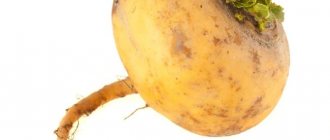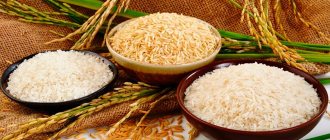© Printemps – stock.adobe.com
Share:
Lentils are an herbaceous plant in the legume family that is becoming increasingly popular in cooking. This culture is not only tasty, but also healthy, especially for those who play sports and adhere to a healthy lifestyle. Lentils are exactly the product that needs to be introduced into your diet to increase the amount of protein necessary for muscle growth.
Unfortunately, many underestimate this product, but in vain! From the article you will learn exactly why lentils are useful and what their role is in sports and dietary nutrition. We will not ignore contraindications for consumption, as well as situations in which lentils can be harmful.
Chemical composition: minerals and vitamins in lentils
The beneficial properties of lentils for the human body are contained in its composition. The basis of lentils is vegetable protein. There is a lot of it. In addition, the human body absorbs it well. Tryptophan, as well as various amino acids, complement the positive effects of this trace element.
This representative of legumes is a storehouse of folic acid. Contains iron. The fact that lentils contain fiber helps the digestive process. If you eat lentil porridge, your health will improve and there will be no problems with the genitourinary system.
Plant culture contains such important elements as:
- zinc;
- calcium;
- potassium;
- phosphorus;
- iron;
- manganese;
- copper;
- boron;
- iodine.
Lentils contain substances that the body urgently needs. These are “Omegas No. 3 and No. 6” (fatty acids). It is believed that lentils contain vitamins A, PP, B, and ascorbic acid. Since it has nutritional qualities, it may well be considered a “substitute” for meat and bread products. The culture contains tryptophan.
This helps to normalize the functioning of the nervous system. Once in the body, this element becomes serotonin, which effectively fights the manifestations of various mental problems.
Rich composition of lentils
All the benefits of this cereal are determined by its amazing composition. Lentils are rich in microelements and vitamins. Due to the high content of all essential elements, lentils are important for vegetarians. Cereals are recognized as a plant analogue of meat. Sprouted lentils have the maximum nutritional value.
So, the cereal is famous for the following components:
- Vitamins E, PP, B1, B2, A, carotene;
- Potassium;
- Calcium;
- Iron;
- Sodium;
- Magnesium;
- Silicon;
- Zinc;
- Phosphorus.
It is also worth noting that sprouted lentils contain 40% more amino acids than regular beans of this crop. But the calorie content of such products is quite high, so cereals are not suitable as a dietary food.
Nutritional value and calorie content of beans
In 100 grams of lentils, the following was detected: liquid (fourteen grams), proteins (twenty-five grams), carbohydrates (fifty-four grams), fats (one gram).
These elements are enough to maintain normal organ function throughout the whole day. It is enough to eat a small portion of beans to fill up and replenish lost energy. One serving of lentils contains 90% of the daily requirement of folic acid.
There are 116 kilocalories in 100 grams of product.
Table: composition of lentils: proteins fats carbohydrates
What lentils look like (photo of grains)
To get an idea of what different types of lentil beans look like, check out the following photos of lentils:
Beneficial properties for the body
Culture has a distinctive feature. This is nutritional value. Why is that? It contains, in large quantities, protein. This is why lentils are very popular among vegetarians.
Of course, eating lentils will be beneficial. After all, its composition is unique. And the body will receive the vitamins it needs and microelements. Culture has the following advantages:
- it has a good effect on overall well-being;
- it ensures the delivery to the body of vitamins and microelements that are so lacking;
- normalizes the functioning of the digestive system;
- is a good preventative against depression;
- has a positive effect on the nervous system;
- the skin is restored and nourished.
Beans are healthy because they are an environmentally friendly product. They have good properties - they do not accumulate toxic substances and remove them from the body. Children will also benefit from grains. They activate growth and have a good effect on brain function.
Despite the many advantages of culture, it cannot be used by all people. There are certain restrictions. These include diseases: gout, diathesis, joint diseases.
If people with these problems consume lentils, the clinical manifestations will worsen. If there are problems with the functioning of the digestive system, the fermentation process may become more active, and the person’s general well-being will worsen.
Those people who suffer from hemorrhoids and urinary problems should not consume beans. In order not to provoke health-related troubles, it is better to treat this culture with caution.
People who have kidney disease should not use this product either.
Photo: how lentils grow
Lentils in proper nutrition
In dietary nutrition, the product occupies far from the last place. Many diets have been invented with this product; there are also special programs on lentils for people who have problems with the gallbladder. Diet No. 5 is considered the most popular - this treatment course helps not only to improve the health of the body, but also to lose excess weight. This diet is based on frequent eating - 5 times a day, and the food must be chopped. Lentils are one of the ingredients allowed for consumption during diet No. 5.
Lentil diets have many positive reviews, but you should not expect dramatic weight loss from them. As a rule, women lose no more than 3 kilograms per month of dieting, since a properly constructed diet is a balanced diet that will simply relieve the body.
© zia_shusha – stock.adobe.com
Many people are concerned about the question: “What can replace lentils on a diet?” Alternatively, you can eat peas, beans or chickpeas. But is it worth replacing lentils, if only they contain the most fully digestible vegetable protein? At the same time, any varieties are equally useful: red, green, yellow, orange.
You can use lentils for weight loss in any form, but most often it is a boiled product in combination with other vegetables, fish or meat. There are a huge number of recipes and dishes that can be prepared on fasting days. These can be soups, lentil cutlets, salads with lentils, in addition, no one has canceled beans as a side dish. Get creative and add variety to the menu. Don’t forget about sprouted lentil beans, they have a beneficial effect on the body, relieving it.
What are the benefits of red, green, yellow and black lentils?
Different types of lentils have significant differences in their chemical composition.
For example, red lentils contain large amounts of iron. That is why it is recommended for use by those who suffer from anemia.
If we are talking about green lentils, they will benefit the intestines as they contain a lot of fiber. This means that it is a good preventative against constipation. Green beans have the richest flavor. That's why those people who love lentils choose this type.
Yellow lentils cannot be called any special type of lentil. This is an ordinary green one, only it has been cleared of its shells. This lentil is chosen when you need to quickly prepare a dish. Yellow lentils cook very quickly, but, nevertheless, the beans do not lose their taste.
If you need to make a salad, you usually use black lentils. It will benefit the body if used in sprouted form. Sprouts contain a large amount of vitamin C. That is why they are advised to be consumed for preventive purposes, so as not to get sick with the flu or ARVI.
How to cook lentils correctly
Cooking lentils of any variety must follow certain rules:
- First, the grains should be sorted and cleared of debris, then washed under running water;
- some varieties require pre-soaking;
- cooking liquid is taken twice as much as grains;
- Before boiling, cook the beans over moderate heat, and then over low heat, while removing the noise (foam);
- add some salt to the legumes towards the end of cooking;
- stir the boiling grains periodically to prevent them from burning;
- Cooking time will depend on the type of lentil;
- You are allowed to add your favorite usual spices and combine them with fried vegetables from onions and carrots, peppers and tomatoes.
Green lentils hold their shape best when cooked and will look good in dishes that call for the whole beans, such as salads. This type requires pre-soaking for 60-120 minutes in cold water. After this time, the liquid is drained and the grain is filled with clean new water. Bring to a boil over moderate heat and cook for about 40-45 minutes.
Brown lentils hold their shape almost as well as green ones. Soups, stews, and casseroles are prepared with it. Brown lentils can be soaked in water for less time before cooking than green lentils, about 40-60 minutes. After soaking, the grains are poured with fresh water. After boiling, continue cooking over low heat for 30-35 minutes.
Red and yellow lentils do not need to be soaked before cooking. It boils very well and is used for porridges, thick soups, and purees.
After boiling, the washed grains are boiled for 15-20 minutes. Black lentils can be cooked without soaking, while retaining their shape perfectly. However, experts still recommend soaking this species for 2-3 hours before cooking to remove antinutrients and increase nutrient absorption. Cook black lentils for 30-40 minutes.
Medicinal properties of lentils: medicinal recipes
Lentils have the main positive property - it is environmentally friendly. This is why the plant is considered safe. If you constantly use it in food, you can remove toxic substances from the body. Beans have the following medicinal properties:
- with their help, you can remove nervous disorders;
- treat urolithiasis;
- restore the functioning of the heart and blood vessels;
- normalize sugar levels in diabetic patients;
- eliminate ulcers, colitis, and other diseases of the gastrointestinal tract;
- People who have anemia should eat lentil dishes, as this will be beneficial for blood formation. The fiber content, in large quantities, has a positive effect on the functioning of the intestines. Those people who have constipation should pay attention to lentils.
Traditional medicine has long been using grains to make decoctions, ointments, and tinctures, the purpose of which is to treat various diseases. To restore the integrity of the skin after a burn, you need to mix lentil flour with butter. After this, apply to the affected area.
The liver will “thank you” for the decoction made using grains. To do this, you need to take water (300 ml) and beans (2 tbsp). Mix the ingredients. Cook for 10 to 20 minutes over low heat. After cooking, allow the broth to cool and then drink.
If you have eczema, you need to use a pea-based tincture. To prepare it, take chopped grass (1 tbsp). Fill with 1 liter of water. The product is infused for 5 or 6 hours. After that you can drink it.
Contraindications for use
Grains contain many purines, natural substances. They have a positive effect on the human body. There is a “but”: if there is no gout. Purines, in large quantities, can trigger the progression of the disease.
The fact that the product contains protein in large quantities negatively affects the functioning of the urinary system. If a person has kidney problems, he should take this fact into account.
If there are “failures” in the functioning of the intestines, then you should not get carried away with eating grains. Otherwise, the microflora will be disrupted, and flatulence may appear. Many legumes have this effect.
Summarize
- Brown, green, yellow, red or black lentils are low in calories, rich in iron and folate, and an excellent source of protein.
- They are rich in health-promoting polyphenols that may reduce risk factors for cardiovascular disease.
- Lentils are easy to prepare—cooking in just 5-20 minutes—and, like soaking, reduces antinutrient content.
Tags: Lentils
- Related Posts
- How to grind flax seeds at home
- Almonds: benefits and harms for the human body
- 13 Best Nuts and Seeds for a Ketogenic Diet
« Previous entry
How to properly store lentils
How long should it be stored?
If storage is carried out according to the rules, then lentils can be stored for a whole year. Usually stored for 9 months. Even after the shelf life has expired, lentils can be used for cooking.
It does not lose its beneficial properties. Only in structure, it will become solid. Hardness will appear, so the cooking process will take longer than usual.
The package labels indicate different expiration dates for this product. So, when the grains were collected, it will not be possible to reliably know. There is no information on the packages about when the grains were collected or when they were packaged.
This is why it is not recommended to store the product for longer than 6 months. If it is stored for more than this time, then it must be treated with caution, examining each grain before use.
Where to store lentil cereals
As a rule, there are no difficulties with storing lentils. It keeps well for a long time. You just need to remember that the longer you store it, the drier the grains will become. To check this, it is enough to compare grains that have been stored for a long time with those purchased in the store. The difference will be obvious.
One of the main qualities of lentils is that they can absorb moisture well. This is why it is not recommended to use glass jars or plastic bags to store the product. Condensation forms in such containers, and it is not desirable for this product.
Lentils should be stored in a dark place with good air circulation. If the grains are exposed to sunlight, the lentils will either begin to dry out or become moldy. If the humidity level is high, then after 7 days the product can be thrown away.
Moisture provokes rotting of grains, and also contributes to the onset of the oxidative process. As a result, the grains will become covered with a specific coating and will begin to smell unpleasant.
That is why this crop must be stored exclusively in a dry place and under proper conditions. To prevent lentils from rotting, they should not be stored near radiators or heating devices.
Author:
womanss.ru
Still have questions? Ask them to the author in the comments!
auto RU
It is advisable to store beans either in fabric bags or in cardboard boxes. If you store grains in canvas bags, this will be the best option. You also need to take care of the tightness of the containers.
There are times when a coating appears on the grains and they begin to fade. As soon as the grains stop shining and become dull, this means a loss of excellent taste, and it will take longer to cook than usual. Changes have occurred in the grain structure.
As soon as symptoms of rotting begin to appear on the grains, or they are covered with plaque, they should not be consumed under any circumstances. Harmful microorganisms began their life activity in the grains. Even if you rinse such lentils, it will not save them. If the grains are stuck together, they should not be consumed either.
How to choose lentils
When choosing lentils for your diet, you can rely on personal taste preferences. The brown variety has a nutty flavor and is good for side dishes and first courses. Green lentils have the thickest shell and contain more fiber than other types. This type retains its shape, has a spicy, spicy flavor and is suitable for salads.
Red lentils do not have a shell, so they cook faster than other types and are ideal for pureed soups. Black lentils are universal, and yellow lentils are in many ways similar to green ones, as they are obtained after peeling the green lentil grains from the shell. As for the rules for purchasing lentil grains, you should pay attention to the date of manufacture, safety and integrity of the container (package).
The following signs indicate that lentils are of high quality:
- pleasant aroma reminiscent of nuts;
- no damage to the packaging;
- clean and smooth beans;
- absence of foreign impurities, litter, bugs, mold;
- the beans are approximately equal in size and color;
- there is no condensation (moisture) in the packaging;
- the beans do not stick together and are easily poured into the package.
If the integrity of the packaging is compromised, there is a suspicious smell, insects, or there are beans of different colors in the same container, you should not buy such lentils.
The benefits and harms of lentils for men and women
If you eat lentil dishes systematically, it will serve as a good preventative against breast cancer. This dangerous disease has become increasingly common in women over the past few years. Also, the use of this product minimizes the appearance of benign tumor-like formations in the uterus.
Lentils have another beneficial property - it facilitates the well-being of women during that difficult period when the transition to menopause occurs.
For women of childbearing age, the product helps reduce pain before menstruation.
During pregnancy, lentils also help. The future baby, if a pregnant woman eats lentils, will receive all the necessary substances for normal development.
Modern women and girls have increasingly begun to include lentils in their diet in order to lose excess weight. In order not to harm your health, while on a diet, you can add lentil dishes to your diet.
Why, when I’m losing weight, do I include this product in my diet? This is due to the fact that eating lentils makes you feel full, and for a long time.
Are lentils good for men?
This culture does not tend to divide people by gender.
It will give its beneficial qualities to everyone who uses it, be it a woman or a man. This means that all the beneficial properties that were discussed earlier apply to representatives of both sexes.
Typically, men are more likely than women to develop cardiovascular diseases. That's why they need to eat lentils. The culture contains components that reduce cholesterol levels in the blood.
Potential harm of lentils to human health
Lentils contain antinutrients (antinutrients) that can interfere with the absorption of other nutrients.
Trypsin inhibitors
Lentils contain trypsin inhibitors, which block the production of an enzyme that normally helps break down protein in food.
However, lentils typically contain small amounts of these substances, and trypsin from lentils is unlikely to have much effect on protein digestion ().
Lectins
Lectins can interfere with digestion and bind to other nutrients, preventing their absorption.
In addition, lectins can bind to carbohydrates on the intestinal wall. If they are consumed in excess, they can disrupt the intestinal barrier and increase intestinal permeability - a condition also known as leaky gut syndrome ().
It has been suggested that too many lectins in the diet may increase the risk of developing autoimmune diseases, but the evidence to support this is limited ().
Moreover, lectins may have antitumor and antibacterial properties (,).
If you're trying to minimize lectins in your diet, try soaking your lentils overnight and discarding that water before cooking.
Tannins
Lentils contain tannins, which can bind to proteins. This may interfere with the absorption of certain nutrients ().
In particular, there are concerns that tannins may interfere with iron absorption. However, research shows that iron levels are generally not affected by the consumption of dietary tannins ().
On the other hand, tannins are high in antioxidants that promote health ().
Phytic acid
Phytic acids or phytates can bind minerals such as iron, zinc and calcium, reducing their absorption ().
However, phytic acid has been reported to have strong antioxidant and anticancer properties ().
Although lentils, like all legumes, contain some antinutrients, it is important to note that removing the outer layer and cooking the seeds significantly reduces the presence of these antinutrients ().
Summary:
Lentils contain antinutrients such as trypsin inhibitors and phytic acid, which reduce the absorption of certain nutrients. Soaking and cooking lentils will minimize them, but regardless, you'll still absorb most of the nutrients.
Benefits of lentils for pregnant women
The expectant mother needs to monitor not only her health, but also the condition of the fetus. If you eat lentils that fit on a small bowl, you can make up for the lack of iron, which protects both adults and children from anemia.
1. Two grains of grains contain the daily requirement of folic acid. The function of this element is to ensure that the fetus develops fully. Folic acid tends to prevent the occurrence of congenital pathologies.
2. Lentils contain protein, in large quantities. This element is responsible for the formation of the baby’s bone tissue. In the mother’s body, it increases the protein level. Since the enzyme is absorbed without problems, it is also easily transformed into energy. Protein promotes the development of muscle tissue in the unborn baby, and the formation of tissue at the cellular level.
3. Thanks to the presence of potassium, blood pressure and mental state are stabilized. The unborn baby will not have a heart defect.
4. Legumes contain the right carbohydrates. They are gradually absorbed into the blood. The woman will be in a good mood. A pregnant woman will not be subject to depression, and will smile more often, not paying attention to minor troubles.
5. Often, pregnant women suffer from constipation. The fact that lentils contain fiber can help solve this problem. The functioning of the digestive system will be normalized, and stool will be regular.
Lentils for beauty
Lentils are the “queen” not only in the kitchen. This plant is often used as an ingredient that restores beauty. So, consuming these legumes improves hair quality and skin condition. Thanks to its beneficial chemical composition, it treats dermatoses, rashes, and makes the skin silky, smooth, and toned. Clinical experiments have confirmed that lentils activate the growth of new cells, and therefore are useful for the regeneration of the epidermis and hair. In addition, it is useful as an ingredient in weight loss diets. To do this, you can arrange fasting days on lentils or introduce dishes from this product into the menu every day for a week.
Lentils have been known since prehistoric times. This crop is one of the most useful legumes. The ancient Greeks considered it the food of the poor, the ancient Egyptians considered it the food of the pharaohs, and in more recent times, lentil grains were used as feed for livestock. Today it is one of the favorite products of vegetarians, which, being an extremely rich source of protein, can replace meat. But lentils are also useful for meat-eaters, especially athletes, expectant mothers and those whose work involves mental stress.
More fresh and relevant information about health on our Telegram channel. Subscribe: https://t.me/foodandhealthru
We will be grateful if you use the buttons:
The harm and benefits of lentils for weight loss
Since ancient times, people have used lentils for cooking. According to historical sources, even in Ancient Rome and Greece, residents grew this crop.
Centuries have passed. Lentils, today, are considered not only a tasty variety of cereal, but also a dietary product with which you can solve several problems at once.
What are the beneficial properties of this crop?
- The most important thing to focus on is the presence of protein of plant origin. All legumes contain this element in large quantities. And this cereal contains a minimum of fat.
- Lentils are a storehouse of fiber. It puts the digestive system in order. It is a good preventative against cancer, the location of which may be the digestive tract.
- Lentil cereals contain microelements in large quantities. And the human body needs them so much! According to doctors, lentils are so nutritious that they can act as an analogue of meat, and they can also replace other cereals.
- Since cereals contain a lot of iron, experts advise consuming lentils with foods that contain a lot of ascorbic acid. For example, with herbs or vegetables. This is necessary so that iron is better absorbed in the human body.
- Research was carried out not long ago. As a result, it turned out that lentils are a good preventative against cancer. This is due to the fact that cereal contains isoflavones. When heat treatment occurs (even severe), these components are not destroyed. That is why cereals are recommended to be consumed for preventive purposes against cancer.
What are lentils
Lentils are an annual legume native to Central Asia, where, according to historians, people consumed these fruits in prehistoric times. During archaeological excavations in the Middle East, lentil seeds were found that are over 8,000 years old. For thousands of years, barley, wheat and lentils were the three main crops grown by different peoples.
Content:
- What are lentils
- What varieties are there?
- The nutritional value
- Benefits for the human body
- Who benefits from lentils?
- Possible side effects
- Use in cooking
- How to cook lentils
- Culinary ideas
- Lentils for beauty
Today, lentils are an indispensable product of Indian cuisine. This crop is consumed in many Catholic countries during Lent. In the modern era, the world's main exporters of these amazing beans are India, Turkey, Canada, China, and Syria.
Sprouted lentils
What benefits do sprouted lentils bring, and what are their harms?
A lot has been said about the benefits of sprouted lentils in various publications. In the absence of contraindications, it can be consumed both in the morning and in the evening. Any dishes can be prepared from it.
With such lentils you can get rid of excess weight, replenish lost energy, improve your well-being, lift your spirits, and normalize metabolic processes.
But those who have problems with the gastrointestinal tract should not consume this cereal. Otherwise, flatulence may begin. And in cases where they eat a lot of sprouted lentils, people experience pain and bloating.
The norm is to consume 150 grams of sprouted lentils per day.
But you shouldn’t eat it right away. It should be taken into account that the process of digesting it is quite long (3 hours). You need to plan to eat after this time has passed.
Don't be afraid of getting hungry. Lentils are a filling food. For a long time after eating it, you can feel full.
Worth taking note! If you don’t like the taste of lentils, then you can eat them using dried fruits, honey, and other legumes. Another option is to use soy sauce as a dressing.
How to sprout lentils at home for food
You can germinate the crop using the jar method. All varieties of lentils can be sprouted, but the results will be different. If the seeds are large, they will need more time.
But varieties with large seeds have a “plus” - the aroma will be more pronounced. Lentils that have sprouted should be stored in the refrigerator. A glass container is used for it. Store for 5 days, no more.
Instructions:
First, create the necessary conditions for germination. It is necessary to take care of sufficient lighting, moisture, and warmth. It is important that the sun's rays do not fall on the sprouts. Diffuse lighting is the best option.
When a person begins to germinate this crop, he may encounter a problem such as rotting of the grains.
Why might this happen? The grains begin to rot:
- due to poor ventilation;
- dirty or warm water;
- poor quality washing.
You need to know about this so as not to make such mistakes. Lentils should be washed well. Then it is laid out on a tray. The layer should be thin. After this, pour the grains with warm water. Leave it for 10 hours.
Attention! The layer of water above the lentils should not exceed 3-5 mm.
After the specified time, the water is drained. The grains are washed under running water in a colander. Wait for the water to drain. Lay out on the same tray.
Then, sprinkle water on the sprouts. The top should be covered with a cotton or linen cloth. For another day, leave it in a cool room with diffused light. As soon as 8 hours have passed, the grains are rinsed. Lentils that have sprouted are placed in a container. Cover with cloth.
Attention! If you want the grains to be highly sprouted, it makes sense to leave them for another 2 days. But we must not forget to wash them after a certain time. Just do this carefully, using a colander. Otherwise, there is a risk of damage to young shoots.
The sprouts taste similar to green peas. This makes it possible to use them in the preparation of salads and other dishes. If a person has never eaten this product in his life, he should gradually introduce sprouted beans into his diet.
Recipes for dietary dishes with boiled lentils
Many people avoid this product because they have little idea what can be prepared from it. This legume can be used to make flatbreads, cutlets, pureed soups, salads and side dishes.
Lentil puree
Ingredients used:
- lentil grains – 250 g (1 whole glass);
- water – 500 ml (you can use lean meat or vegetable broth);
- vegetable oil - 1-2 tbsp;
- laurel -1-2 small leaves;
- greens – chopped dill.
Preparation progress:
- Legumes are soaked for 30-40 minutes;
- The grains are immersed in water and brought to a boil over moderate heat, then boiled for about another 20 minutes;
- After the time has passed, turn off the fire, add a bay leaf and keep the legumes in water under the lid for another 5-7 minutes;
- The liquid is drained, the boiled lentil grains are blended with a blender (immersion or placed in a bowl), oil is added. Before serving, sprinkle with dill.
Cream soup
It differs from puree in the number of ingredients and a more liquid consistency.
For preparation take:
- onion (medium) – 1 pc.;
- carrots – 1 pc.;
- water or broth (vegetables, chicken) -1-1.5 l (about 5 glasses);
- garlic – 1-2 cloves;
- lentils (preferably red) – 350-400 g;
- greens - dill, parsley.
Preparation progress:
- The legumes are pre-soaked for 35-40 minutes.
- After the time has passed, the water is drained, the grains are poured with broth and placed on the stove, boiled for 20-25 minutes.
- The onion is chopped into small pieces, the carrots are chopped on a grater and sauteed in vegetable oil (olive oil is possible).
- Add roasted vegetables, crushed garlic, bay leaves to the boiling lentils and keep on fire for another 7-8 minutes.
- After turning off the soup, let it sit for a while and garnish with herbs before serving. If the lentil grains are not cooked well, you can puree the soup with a blender.
Lentils with meat
Meat served with a lentil side dish is an excellent alternative to the usual buckwheat, rice, and potatoes. When on a diet, you should give preference to dietary types of meat: turkey, chicken breast, lean pork, rabbit, and veal.
For preparation take:
- 1 cup lentil grains;
- 500 g of meat (any of the above);
- carrot;
- onion;
- seasonings to taste.
Preparation will not take much time:
- The meat is cut into small pieces and sent to the frying pan;
- Chop the onion and carrots and add to the meat, fry for 8-10 minutes. together;
- Pre-cleaned and soaked lentils are boiled for 20-40 minutes. (depending on the variety);
- The cooked grain is filtered from the liquid and combined with frying meat and vegetables, left to simmer over low heat for another 15-20 minutes. At the end, flavor enhancers are added - bay leaf, peppercorns, a little salt.
Lentil flatbreads
Flat lentil buns are very filling and can also be eaten on a diet:
- lentil grains (red) – 200 g;
- flour – 2-2.5 tbsp;
- yeast – 6 g;
- onion – 1 pc.;
- sugar – 1 tsp;
Cooking steps:
- Lentils are pre-soaked for 1.5 -2 hours;
- After soaking, the grains are boiled and cooled, after which they are punched in a blender to a mass without lumps.
- For the dough, mix sugar, 1 tbsp in a container. flour, 3 tbsp. warm water with yeast and leave for 10-15 minutes.
- When the dough rises, combine it with lentils and add a spoonful of vegetable oil. Allow the mass to rise.
- The onion is chopped into small pieces and fried.
- The dough combined with lentils should increase, after which flour, fried onions, and salt are added to it. Flour is introduced gradually, sifting it at the same time. Slowly knead the dough.
- The dough is divided into 9-10 parts and kneaded with your hands, giving the flatbreads a rounded shape.
- Place the flatbreads on a greased baking sheet lined with parchment and bake for 20-25 minutes. at 200C.
Vegetable salad with lentils
A salad of seasonal vegetables and lentil grains is perfect for dinner, as a complement to meat dishes. For salad, it is better to take a green variety of lentils, which does not boil so much and retains its shape.
- bell pepper;
- Cherry tomatoes);
- cucumber;
- parsley dill;
- 150 g boiled lentils;
- olive oil.
The amount of vegetable ingredients is selected depending on taste preferences. Boil the lentils and let cool. Vegetables are chopped, combined with lentils, seasoned with oil and sprinkled with herbs.
Despite the fact that lentils are not a very familiar product for most people, dishes with them are tasty, satisfying and healthy. The low calorie content of this boiled grain allows it to be included in dietary dishes. Porridges, soups with water and broth, salads and side dishes with lentils can significantly diversify your daily diet.
Lentil flour: application
Using the grains, a special lentil flour is made. She has a lot of positive characteristics. In cooking, it is very often used. This flour contains protein, which is easily digestible. This element also has a good effect on the gastrointestinal tract. Using this flour, you can make excellent puree soup, or bread, or flatbreads, or cakes.
Interesting information! Lentil flour is a product used in the confectionery and baking industries. Wheat flour may contain 20% lentil flour so that the finished product has more protein in its composition.
In order to make shelf-stable products, lentil flour is also used. So, it is used to make crackers, biscuits, and cookies.
Attention! The information in the article is provided for informational purposes. Do not self-medicate, consult an experienced doctor.
Lentils and sports (fitness and bodybuilding)
In the nutrition of athletes, lentils are a healthy and often even necessary product. The fact is that this legume contains a large amount of vegetable protein, which is quickly absorbed. The percentage of protein in lentils is close to that of meat, but there is only one difference: meat always contains cholesterol and fat, and lentils are an unsurpassed source of easily digestible protein, which is extremely necessary in bodybuilding and other sports where muscle growth is important.
Among all legumes, lentils are considered the record holder for iron content. It is this microelement that allows you to maintain the cardiovascular and circulatory system in good shape. A healthy heart will allow you to increase your load and not feel discomfort.
For those involved in fitness, lentils are also an excellent source of energy. The main thing is to use this product regularly, only then will you be able to notice positive changes in your body.
Harm of red lentils
Harmful consumption of red lentils can be traced only in cases of individual intolerance. In other cases, red lentils are very well digestible and their benefits are invaluable, except in cases where they are contraindicated.
Lentils can be harmful to people who suffer from prolonged digestion of food. Since legumes provoke gas formation in the intestines and a person’s well-being depends on the duration of digestion.
The product is often consumed with meat, vegetables or copious amounts of spices. This combination can also be harmful due to the mixing of animal and vegetable protein and the fact that the meal will have a high calorie content.
Lentils can also harm people:
- with dyskinesia of the gallbladder;
- with incipient gout or primary joint diseases;
- those suffering from digestive problems;
- with dysbacteriosis.
Research on lentils shows that a large amount of protein in the product can lead to a deterioration in the body's metabolic processes.
Contraindications
Any legume causes gas formation in the intestines, so lentils are contraindicated for people:
- with ulcers of the digestive system;
- with stones in the gall bladder and kidneys;
- with complaints about digestion and its speed;
- patients with gout;
- having abundant salt deposits in the joints.
Anyone who suffers from digestive disorders should pay special attention.
Also, legumes and lentils in particular should not be consumed if there is a danger of exacerbating chronic diseases.
Types and varieties of lentils
Types of Lentils
The Lentil genus includes 7 species, only one of which, as we remember, is cultivated: Lens culinaris (cultivated lentil), Lens ervoides, Lens himalayensis, Lens kotschyana, Lens lamottei, Lens montbretii and Lens nigricans.
The cultivated plant species, in turn, has 4 more subspecies: Lens culinaris subsp. culinaris, Lens culinaris subsp. odemensis, Lens culinaris subsp. orientalis and Lens culinaris subsp. tomentosus.
And all varieties of lentils are divided into large-seeded, which are otherwise called plate-shaped, and small-seeded. The former are more common, since the latter are more difficult to grow and harvest, and therefore their cost is higher.
There is also a culinary classification of these beans by color:
Lentils Green
Green (also mistakenly called French) are brown lentils that have not yet ripened. But there is, in fact, a variety of green lentil beans bred in France. Unripe lentils take longer to cook than other varieties, but your patience is rewarded - they turn out much tastier. By the way, not only I, but also many other connoisseurs of this product think so.
Lentils Brown
Brown cooks faster and even with prolonged exposure to temperatures retains its shape.
Red Lentils
Red lentils (aka Egyptian) are beans without shells, which means they are even easier and faster to cook. Most often they are given to children and people weakened by illness, as well as to those who suffer from anemia.
Lentils Yellow
Yellow – it’s also green, but without peel, it also cooks quickly and turns out very tender, with a mushroom flavor.
Lentils Black
Black is the rarest group of beans that Canadian breeders have bred. These lentils are small, tasty, aromatic and, moreover, rich in antioxidants. These seeds are also very similar in appearance to black caviar, which is why they are nicknamed beluga.
Lentil varieties
Lentils Lyubava
Variety "Lyubava"
This plant variety is mid-season. Since 2005, it has been included in the Russian State Register. Representatives of “Lyubava” rarely grow above 50 centimeters; the fruits are pale yellow with excellent taste.
Lentils Spicy
Variety "Spicy"
This variety belongs to the early-ripening and high-yielding varieties of the plant - up to 25 centners of beans can be harvested from one hectare. The height of such bushes varies from 40 to 60 centimeters, they are resistant to diseases characteristic of lentils, as well as to lodging. In addition, this variety can survive frosts down to -6 °C and can grow in almost any soil. The seeds of “Savory” lentils are red.
Lentil Danae
Variety "Danae"
Another early-ripening, highly productive plant variety, resistant to lodging, pests and diseases. It tolerates both frost and drought well. Produces green beans with excellent taste.
Lentil Anthia
Variety "Anfiya"
A mid-season variety of lentils, the fruits of which remain green even after ripening, with good marketability and taste. Such bushes adequately resist disease and drought, and are not prone to lodging or shedding.
Lentil Darinka
Variety "Darinka"
These are red lentil beans with a brown pigmented shell with a diameter of no more than 3.5 millimeters. Representatives of this variety usually produce a good harvest and are also resistant to lodging and drought.
Other varieties of this plant:
| "Maksim" | "Imperial" |
| "Invisible" | "Red King" |
| "Melford" | "Impala" |
| "Canadian" | "Redcliffe" |
| "Lens" | "Regina" |
| "Vehovskaya" | "Belotserkovskaya 24" |
| "Chiflik 7" | "Dnepropetrovskaya 3" |
| "Petrovskaya 4/105" | "New Moon" |
| "Puy" | "Tallinskaya 6" |
| "Stepnaya 244" | "Penzenskaya 14" |
| "Luganchanka" | "Petrovskaya Jubilee" |
show all
Back to contents
Benefits of red lentils
The fiber contained in red lentils is soluble, quickly absorbed and digested, stimulating digestive processes. This unique ability is the best way to prevent the development of colorectal cancer.
Invaluable benefits are also observed in the prevention of breast cancer due to the presence of isoflavones in the product. This component remains even after any type of heat treatment: cooking, drying or canning.
The presence of folic acid and iron in the composition provides the body with 90% of the required daily requirement of these components. The benefits of red lentils and their effectiveness can also be seen in dietary menus.
Despite the so-called average calorie content, legumes promote weight loss due to their composition and healing properties.
However, the benefits of the product will be assessed with moderate use. Since the calorie content is still high enough to be eaten without measure.
But for pregnant women, on the contrary, red lentils are recommended for consumption in limited quantities. Nursing mothers can gradually introduce this product into their diet three months after giving birth.
At this time, the child is not so afraid of gases in the intestines; the body is already beginning to develop protective functions. Children will benefit from lentils if they start cooking them in small portions from the age of two.
Description and characteristics
Lentils are small seeds of one of the varieties of the herbaceous plant of the same name in the legume family, 30–50 cm high.
Flowering begins on the lowest branches, gradually moving up the plant, and continues until harvest. In place of the flowers, bean fruits are formed containing 1–3 seeds, the size of which is usually 4.5–8 mm in diameter. The weight of 1000 seeds is on average 50–75 g.
The seeds mainly consist of 2 halves covered with a husk. Both seeds have a shape similar to a biconvex lens, which is why they are called Lens culinaris in Latin.
These legumes are considered one of the most ancient food crops - they were grown in Southwest Asia as early as 7000 BC. e. In Western Asia and India, where many people are vegetarians, it has become the cheapest source of protein to meet their nutritional needs.
Did you know? Lentils are mentioned several times in the Bible: for example, the book of Genesis tells the story of Esau, who gave up his birthright for a bowl of lentils and a loaf of bread.
Green lentils, also known as "big" or "Chile" lentils, have a delicate aroma and nutty flavor, do not require soaking and retain firmness and shape when cooked, making them ideal for salads or pilafs.
French green lentils (or puy), grown in the Le Puy region of France, are smaller and darker than regular green lentils, have the best texture and flavor of all lentils, and are among the more expensive varieties. Its seeds appear gray-green and slightly mottled on the surface. This variety remains firm and requires an increase in cooking time to 40 minutes.
Most of the world's lentil production is in Canada, India and Turkey
Types of Lentils
colorful lentils, photo
For culinary and medicinal purposes, 5 varieties of lentils are most often used:
- Red - small, quickly boiling grains with a piquant taste, used for making porridges and purees;
- Brown - relatively large beans with a pronounced nutty taste, from which casseroles and soups are prepared;
- Black - small, caviar-like seeds with a nutty flavor, which are added to salads, first courses, and side dishes;
- French or puy - relatively large greenish-black beans with a pronounced spicy taste, from which salads and crumbly side dishes are prepared;
- Green - unripe grains of the plant, which are added to salads and cold appetizers.
Followers of a healthy diet often eat sprouted lentils. The grains of the plant are thoroughly washed, infused for 10 hours in water at room temperature, laid out in a thin layer on a tray, covered with a damp cotton or linen napkin and left for 24 hours. The finished product is eaten raw or added to vegetable salads.
Description of lentils
Lentils
Lentils or Lens are a whole genus of herbaceous plants belonging to the Legume family, and therefore related to peas, beans, chickpeas, mung beans, and soybeans. In addition, their closest relatives include acacia, wisteria, mimosa, clover, and alfalfa. There are also plants in this family that bear female names - vetch and inga. It’s a pity that Anna is not there, but we’ll look for it...











